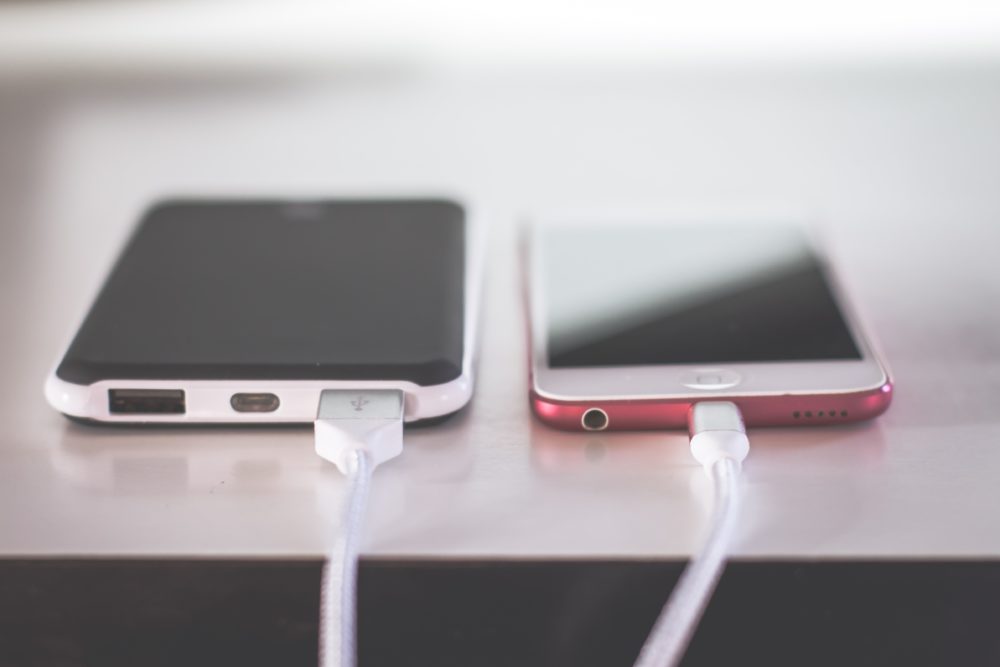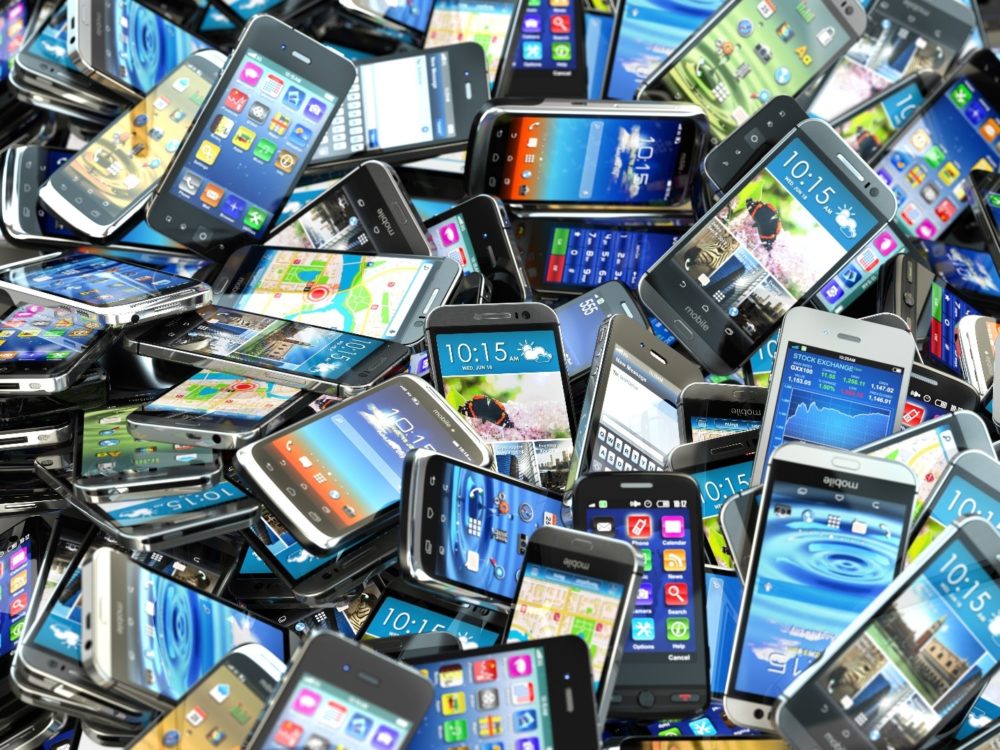Did you know that leaving used smartphones in your dresser drawer can actually have a negative environmental impact? Here’s why you should consider smartphone recycling. It’s a smart choice.
As 2017 came to an end, capping off a year when the economy was very vibrant, there was an interesting footnote around holiday sales. It was reported that after years of increasing at a steady pace, smartphone sales actually dropped.
The decrease was small. Smartphone shipments capped out just below 1.5 billion in 2016, then experienced a 0.1 percent dip in 2017. That’s not much of a drop. But it does reflect the first time since 2008 that fewer phones were sold from one year to the next.
And yet that news is likely to be welcomed in some corners. Government agencies and environmental groups have been warning for years about the insatiable worldwide appetite for new electronics devices. Their main concern: what to do with all those devices that people are discarding as they purchase newer, updated versions.
The amount of e-waste, or used electronics, being thrown out, is posing increasingly serious risks globally. Because they are often getting sent, en masse, to community landfills. The toxins inside those devices pose risks to the soil and nearby water supply.
Activists have spent years sounding the alarm. They continue to promote safe and responsible e-waste recycling as a better alternative. Cell phone recycling companies like Great Lakes Electronics Corporation can help turn those used electronics into new products.
The slowdown in smartphone sales may seem like a welcome trend for environmental activists. But not all signs point to a significant decrease in the public’s voracious appetite for the newest, most sophisticated versions of their favorite smartphones.
Why are smartphone sales slowing down?
In January, Apple released its holiday quarter earnings statement. It showed that while the average price of an iPhone has reached the highest point ever, the company sold fewer devices than expected.
That news surprised some industry watchers. Because sales of smartphones have been increasing steadily on a yearly basis. Globally, smartphone sales hit 397 million units in the fourth quarter of 2017. That marked a 1 percent increase year-over-year.
Consumer research company, GfK noted that demand was mainly driven by consumers in the Middle East and Africa. Sales were up there by 8 percent. In Central and Eastern Europe, demand grew by 7 percent.
In addition, the average sales price for global smartphones was up 10 percent year-over-year. That’s the fastest quarterly growth rate to date.
Figures like that have left government officials and environmental representatives working to boost recycling rates for ewaste. They need to ensure the parts within them are used to make new products, and do not end up in landfills where they pose risks for soil and water contamination.
What’s the lifespan now for used Smartphones?
The shortening lifespan of an iPhone concerns them. With each new version that comes out, it seems the number of consumers replacing their older model keeps going up. That means more and more ewaste is being generated as a result.
And there’s no question that a booming economy is helping to facilitate this trend. It gives more consumers the ability to buy the latest model as soon as it hits the market.
And that’s the problem. Whereas consumers once held on to their devices for years, now they replace them within months.
Will slower sales change that?

But maybe not so quickly anyone.
As prices keep rising, it could be that consumers are responding – and voting with their wallets. A new study by International Data Corporation analyzed smartphone sales in the last quarter of 2017 and showed the drop over the holidays.
The conclusion was that smartphone consumers may be starting to ignore those spiffy new models. And they may be opting instead for older – and, more importantly, cheaper – models.
While sales worldwide increased in 2017, they actually dropped in the year’s final quarter, by 6.3 percent compared to the previous year’s fourth quarter. Were rising prices to blame?
The new iPhone X was selling for $1,000. In some instances, IDC noted, the latest advances in technology seemed to put a higher emphasis on the style and look of the new model, and not what it does. And the higher prices may have become an issue. Sales of the iPhone X turned out to be lower than expected during the holiday season.
And this trend could become a wake-up call for companies that have allowed prices to keep rising year over year.
Some state lawmakers are responding
To be sure, the lower sales don’t seem likely to set off alarm bells — yet. Apple shipped 215.8 million units in 2017, while main rival Samsung shipped 317.3 million — impressive numbers as they head into 2018.
And Chinese brands Huawei, Xiaomi, and Oppo also did exceptionally well, with Xiaomi seeing a 96.9-percent growth over last year’s fourth quarter.
Those are still very strong sales.
And that’s caught the attention of state lawmakers. A number of states have banned e-waste from going in with regular household trash. Or they voted to require used electronics to be recycled. The increased sales of smartphone has prompted one state to target the source of the toxins within them, the batteries.
Washington’s state legislature wants to ban the sale of devices that contain batteries that are “difficult or impossible to remove.” Called the Fair Repair Act, the bill would require portable devices to be more easily repairable, rather than disposable.
The bill would ban the sale of “digital electronic products.” Those are designed so they can’t be independently repaired. That’s usually done by attaching a battery that’s nearly impossible to remove. The proposed law would apply to devices such as smartphones, laptops and tablets, but not accessories.
Washington isn’t alone. Twelve states have introduced so-called right-to-repair bills that would require device manufacturers to provide repair information and parts for their electronics. For example, these bills generally would prevent manufacturers from using software locks to discourage third-party repairs.
The bottom line is that as technology advances, prices are also rising. And that may slow sales.
But advances are also prompting more state lawmakers to ponder what the rapid growth in smartphone use means on a larger scale. That includes concerns related to protecting the environment and to recycling.
Environmental concerns remain high
The environmental problems with high smartphone sales are clear. Without a strong commitment to recycling, e-waste is ending up in landfills in large numbers, and the chemicals within these products, like lead and mercury, pose dangers to the environment.
That’s why states are pushing for better alternatives, one of which is to take those devices to a proven and reliable recycling firm like Great Lakes Electronics Corporation, where the devices can be dissembled, and the individual parts used to make new products. Calling on consumers to recycle cell phones is increasingly important, and if they don’t know where to dispose of electronic waste, there are cell phone recycling companies like Great Lake Electronics ready to help.
As the national economy continues to get stronger, sales of electronics globally are likely to keep rising. Whether or not higher prices will slow the sales or whether manufacturers will respond by lowering those prices, remains to be seen.
But no one is expecting the rise in ewaste to slow down anytime soon, which is why states are educating consumers about the importance of recycling their used electronics.
Smartphone Recycling: Don’t Just leave it in a Drawer, Recycle Today
Great Lakes Electronics Corporation specializes in electronic recycling and is also your proven security specialist. All personal information stored on your devices and hard drives is eliminated, along with your concerns about identity theft.
We disassemble these items into component parts, and the ones that still have value can be sold for reuse. Other parts are used for metals recovery, and everything is recycled.
Call us today at 888-392-7831 to request a quote or to learn more.

